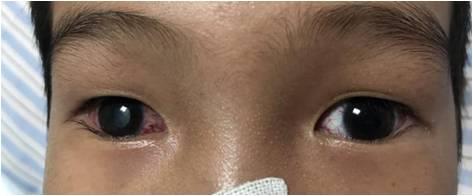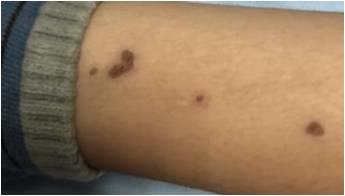This 9-year-old boy with developmental delay was admitted to VGHKS due to prolonged febrile illness and deteriorating consciousness. Under suspicion of encephalitis, we performed brain image, lumbar puncture, and CSF PCR, which finally revealed herpes simplex type 1 encephalitis. With timely antiviral treatment, the boy’s clinical condition was improving. However, physical examination showed red eyes and cutaneous telangiectasia. In addition, his mother mentioned his twin brother also has progressive ataxia of trunk and global developmental delay. Under suspicion of inherited disorders, we persuaded the patient’s family let their children undergo gene examinations which demonstrate Ataxia-Telangiectasia.
Herpes simplex encephalitis is very fetal without appropriate antiviral treatment. Herpes simplex virus (HSV) is among the most commonly identified cause of acute viral encephalitis in pediatrics. If untreated, mortality is up to 70 %. In fact, treatment with acyclovir has reduced mortality from 70% to 20%. However, patients may undergo long-long sequelae due to brain injury even with adequate treatment.
Ataxia-Telangiectasia is a multisystem autosomal recessive neurodegenerative disorder characterized by unsteady gait due to cerebellum impairment, immunodeficiency, ocular and cutaneous telangiectasia. The incidence estimates range from 1 in 40000 to 3 per 1 million live births. We can confirm the diagnosis by gene exam. Patient with ataxia-telangiectasia should under regular neurology OPD follow up and regular immune globulin replacement to prevent severe infection diseases.

